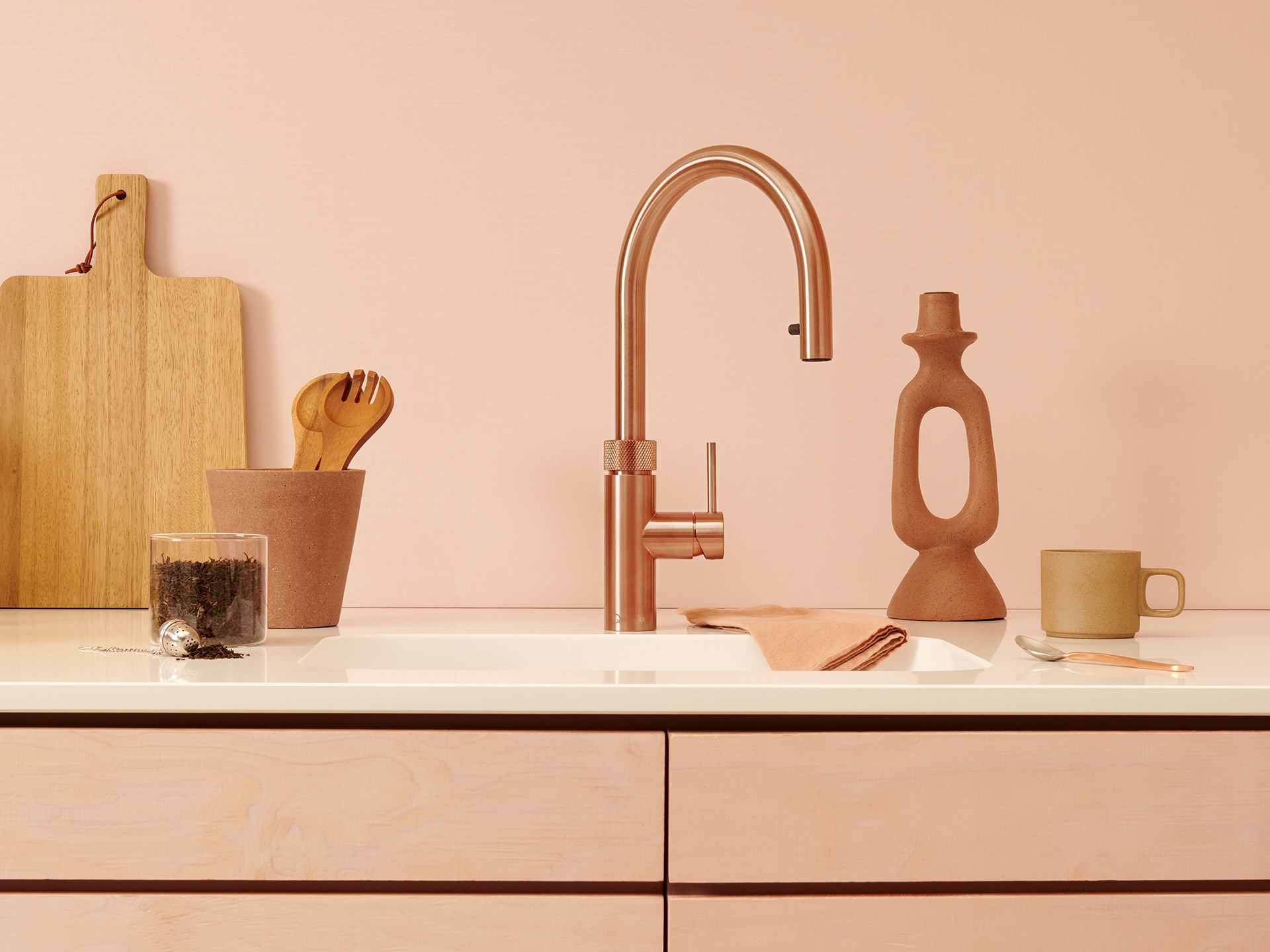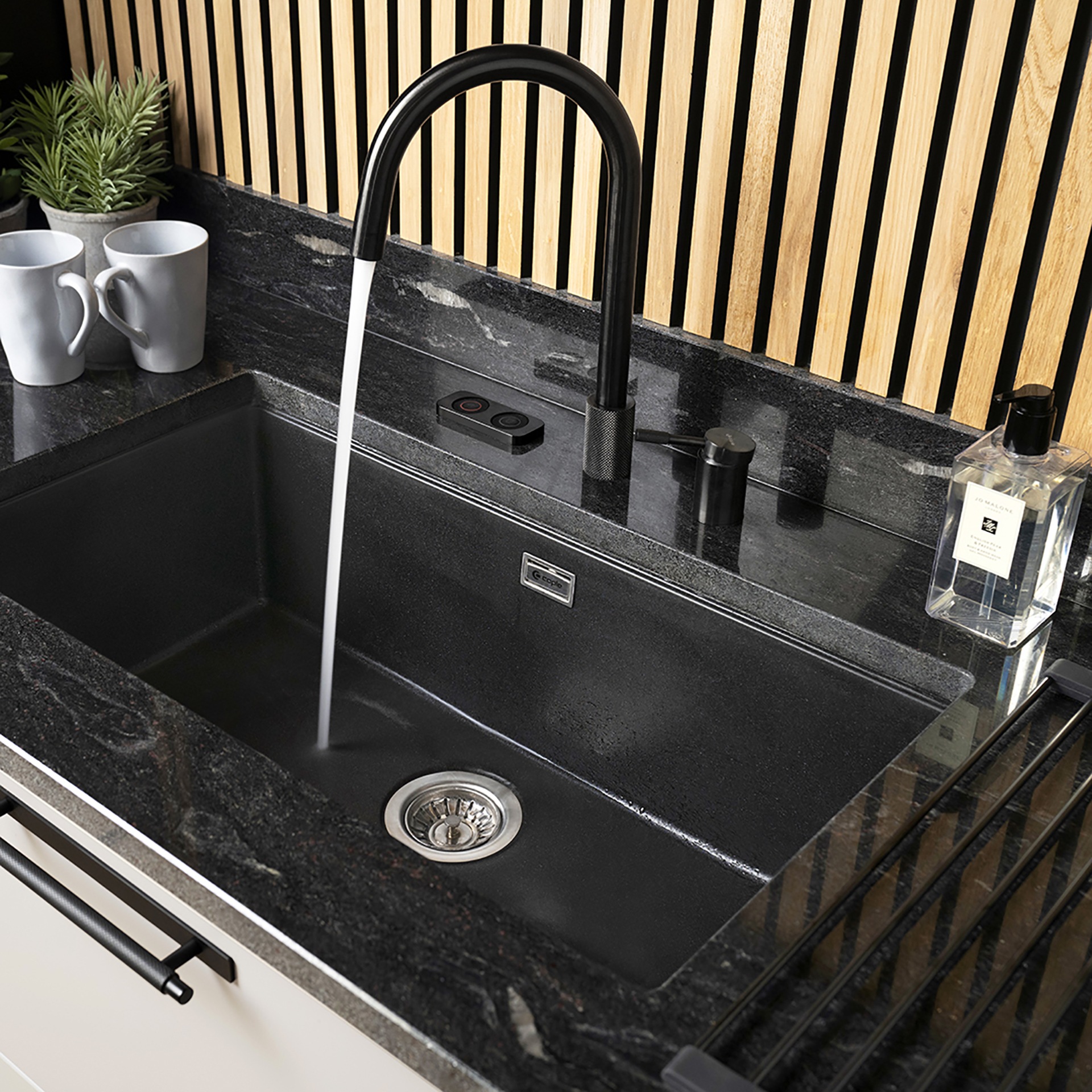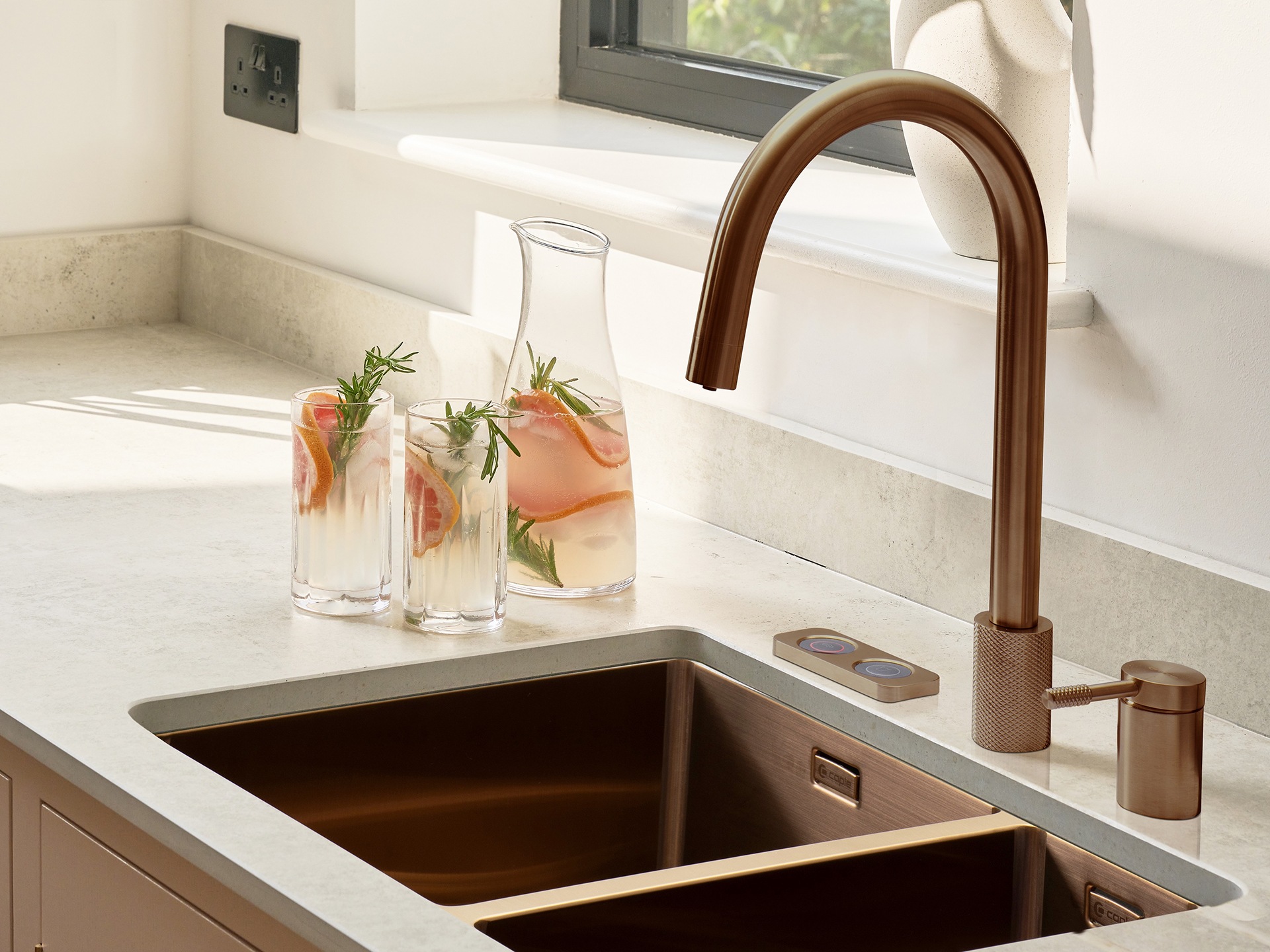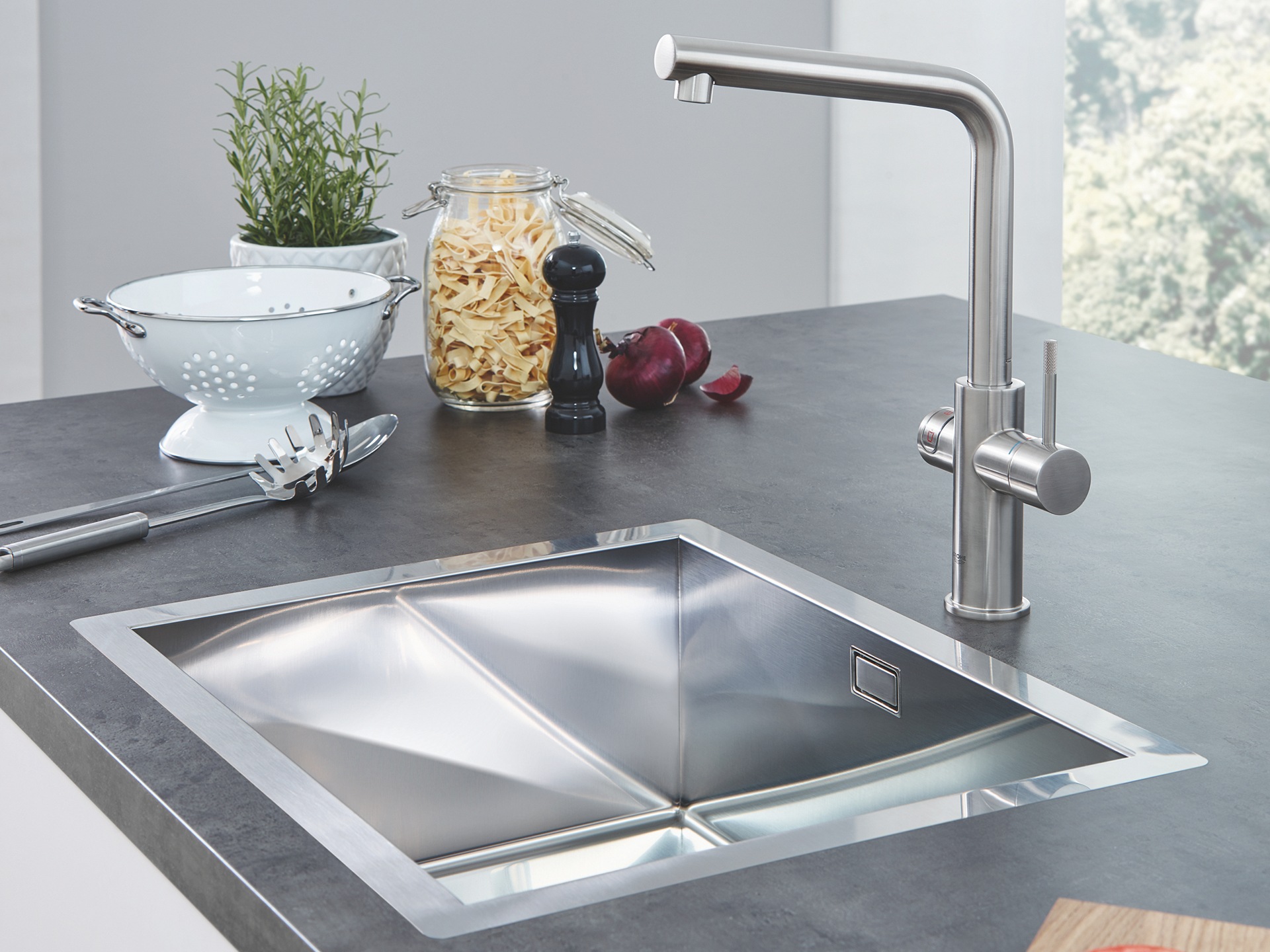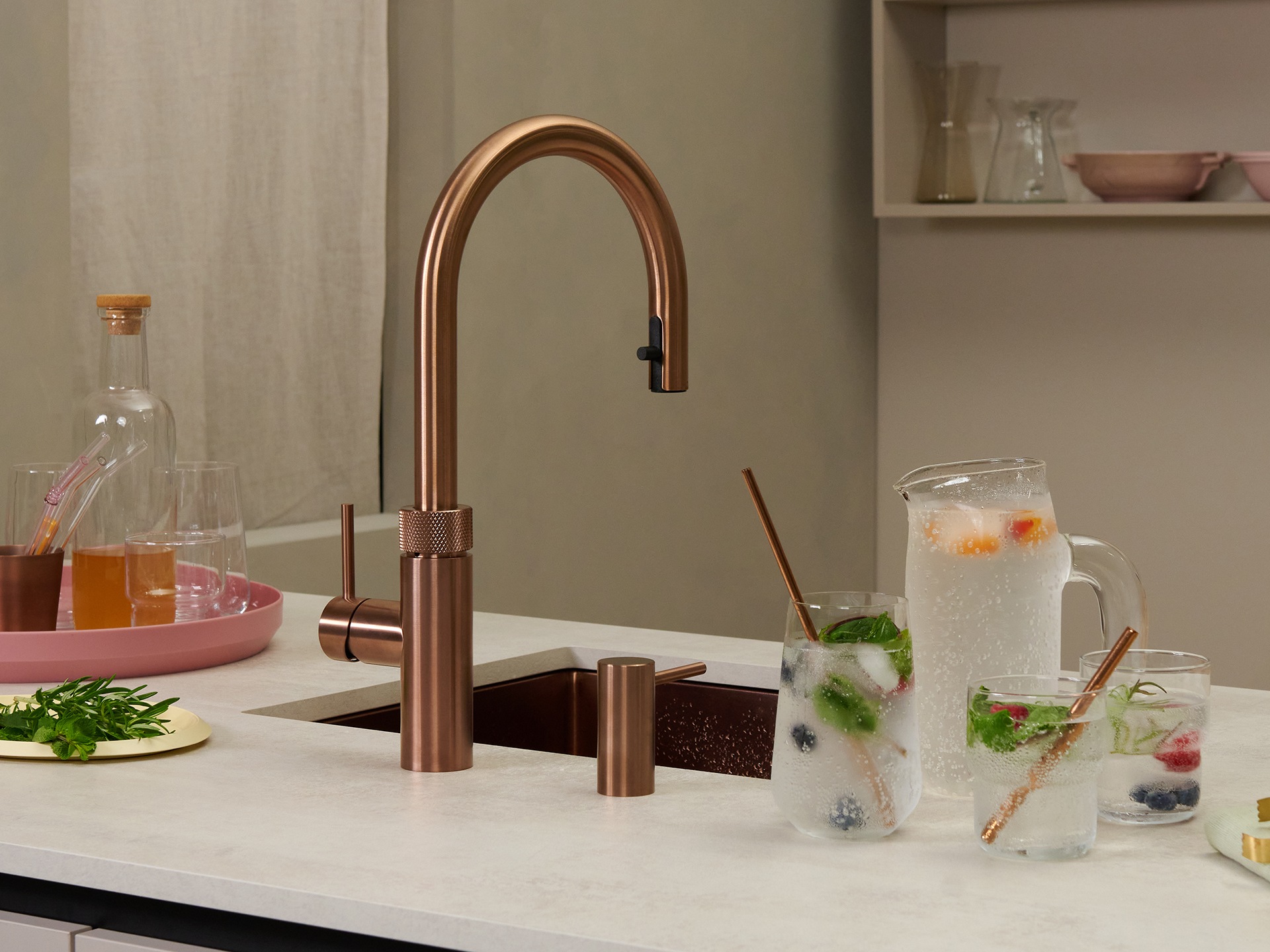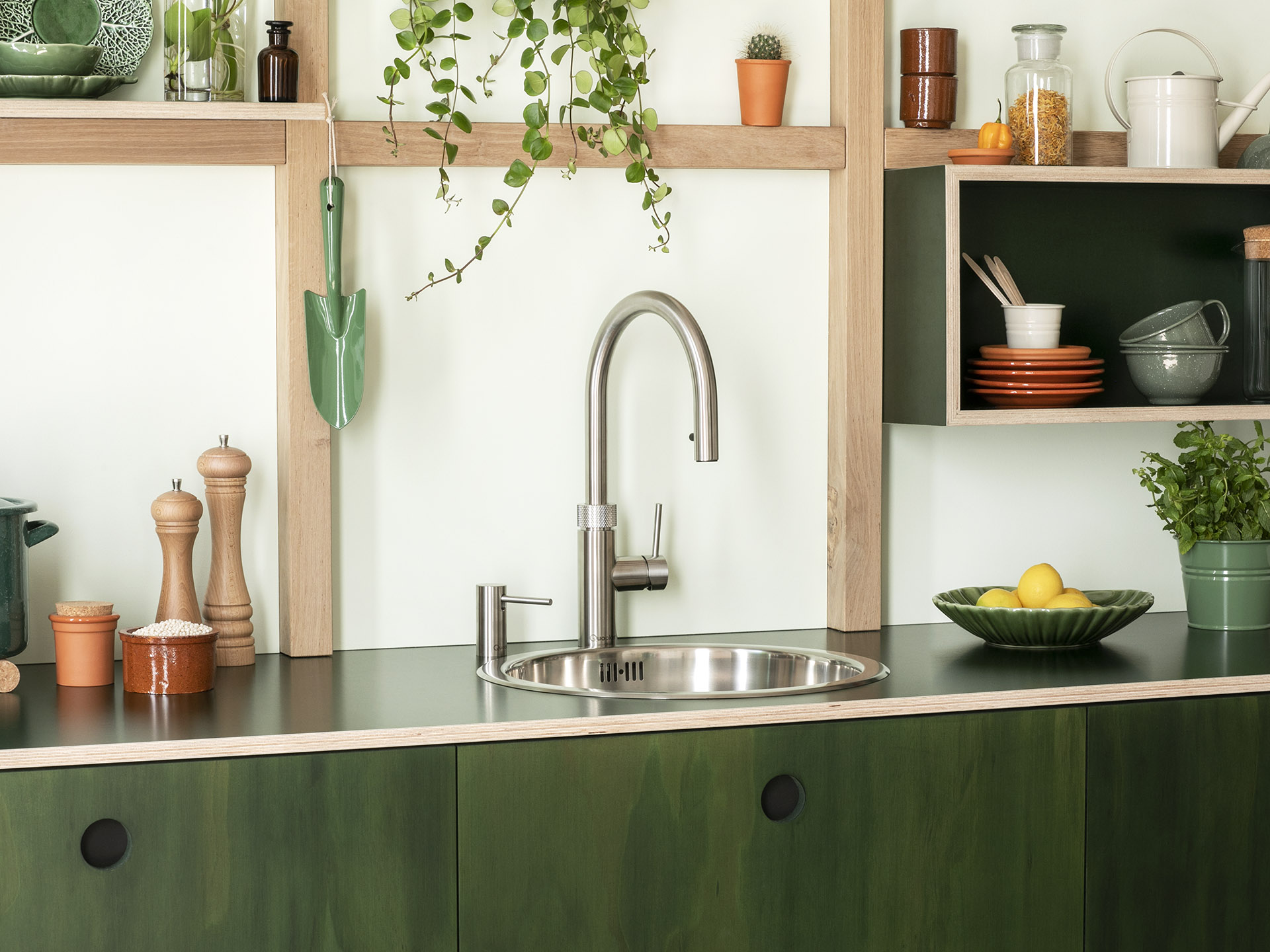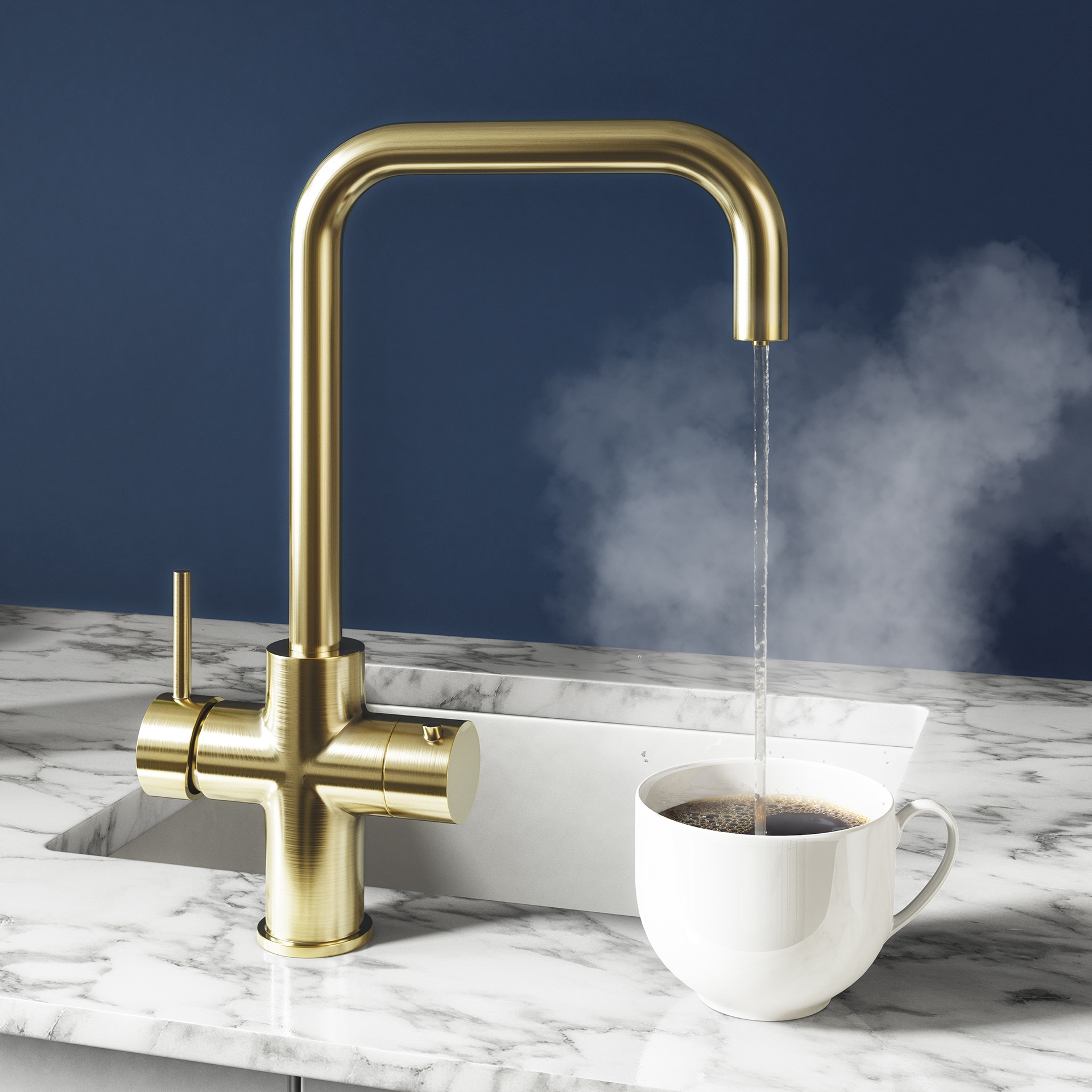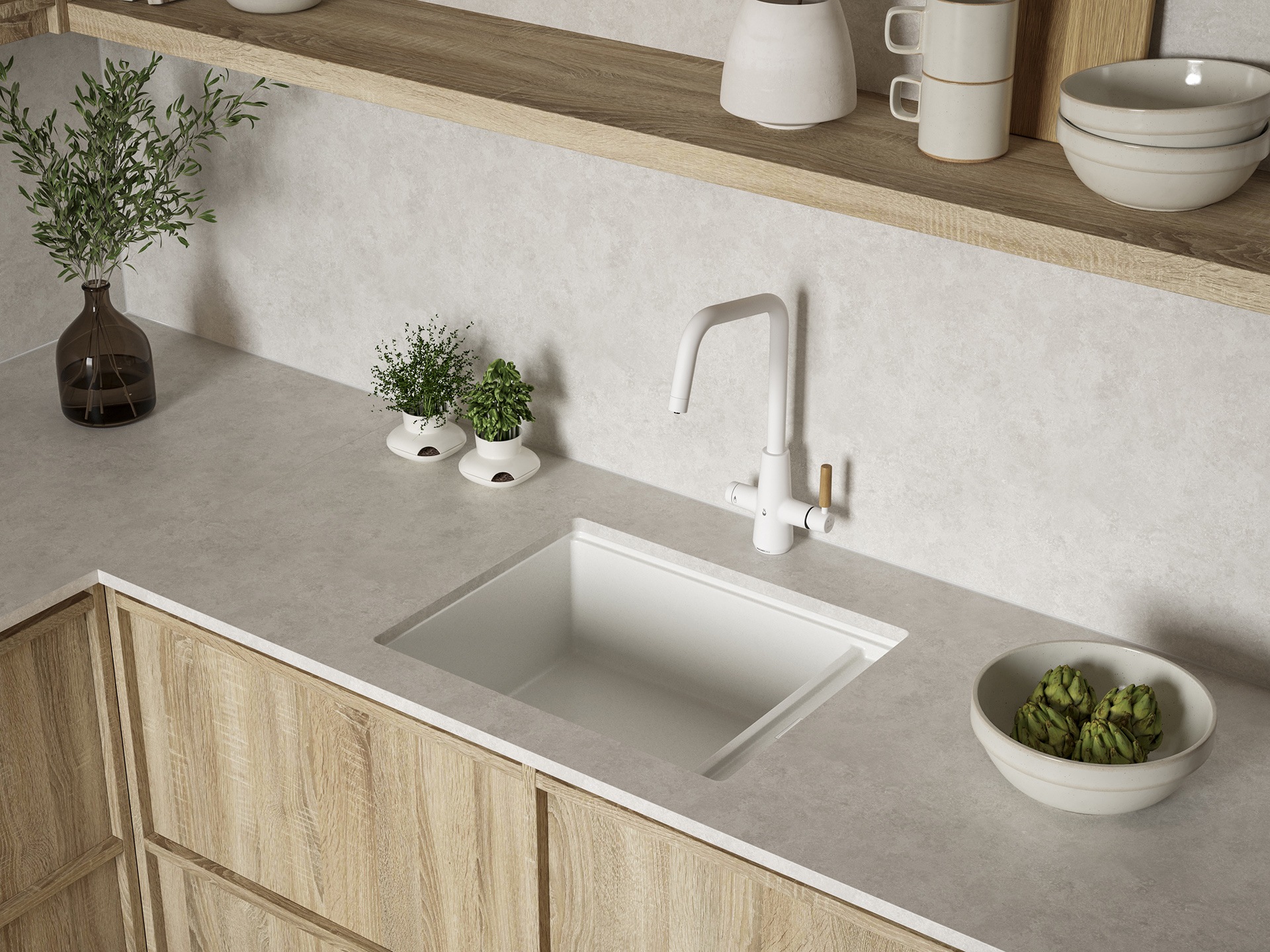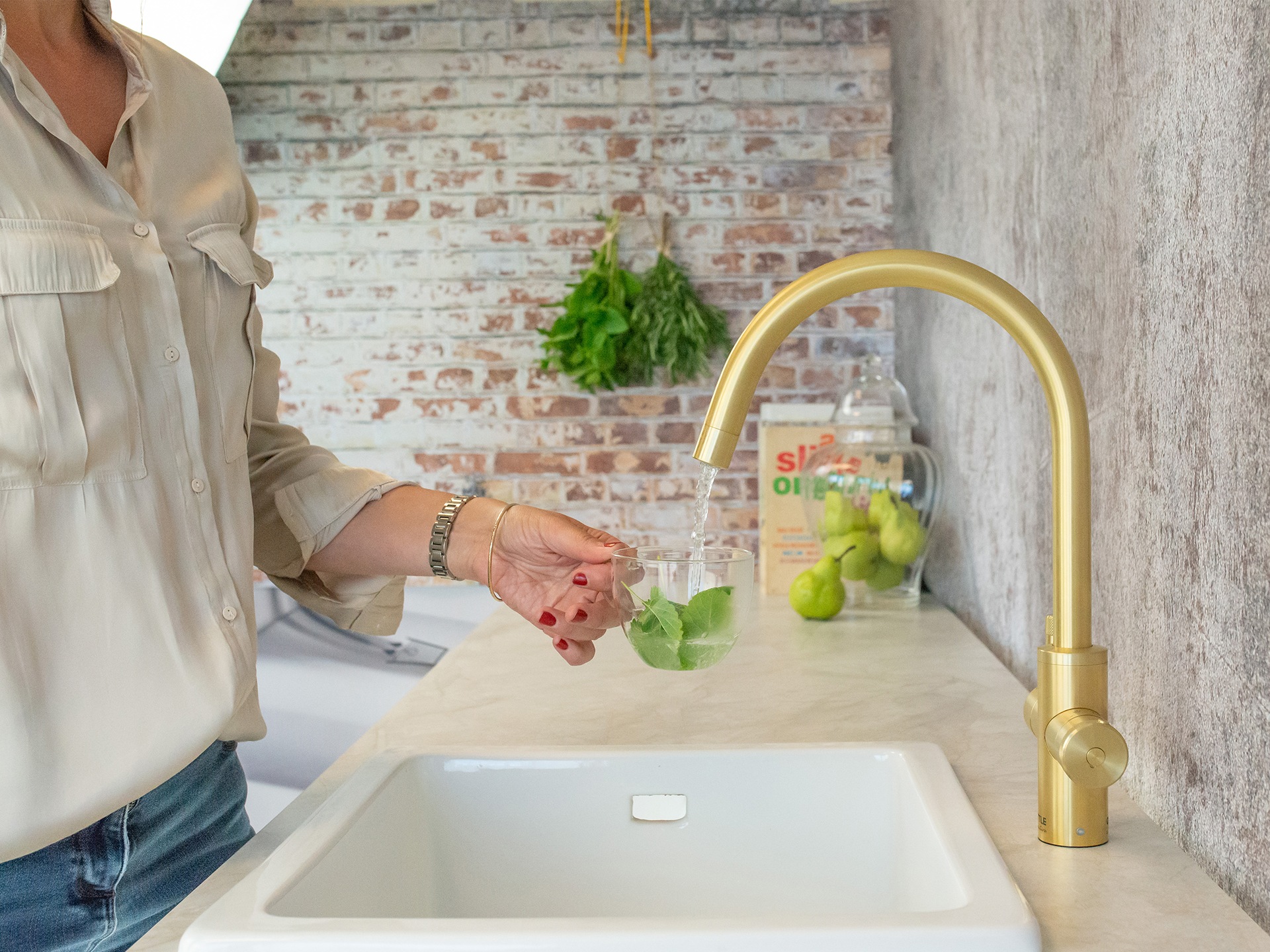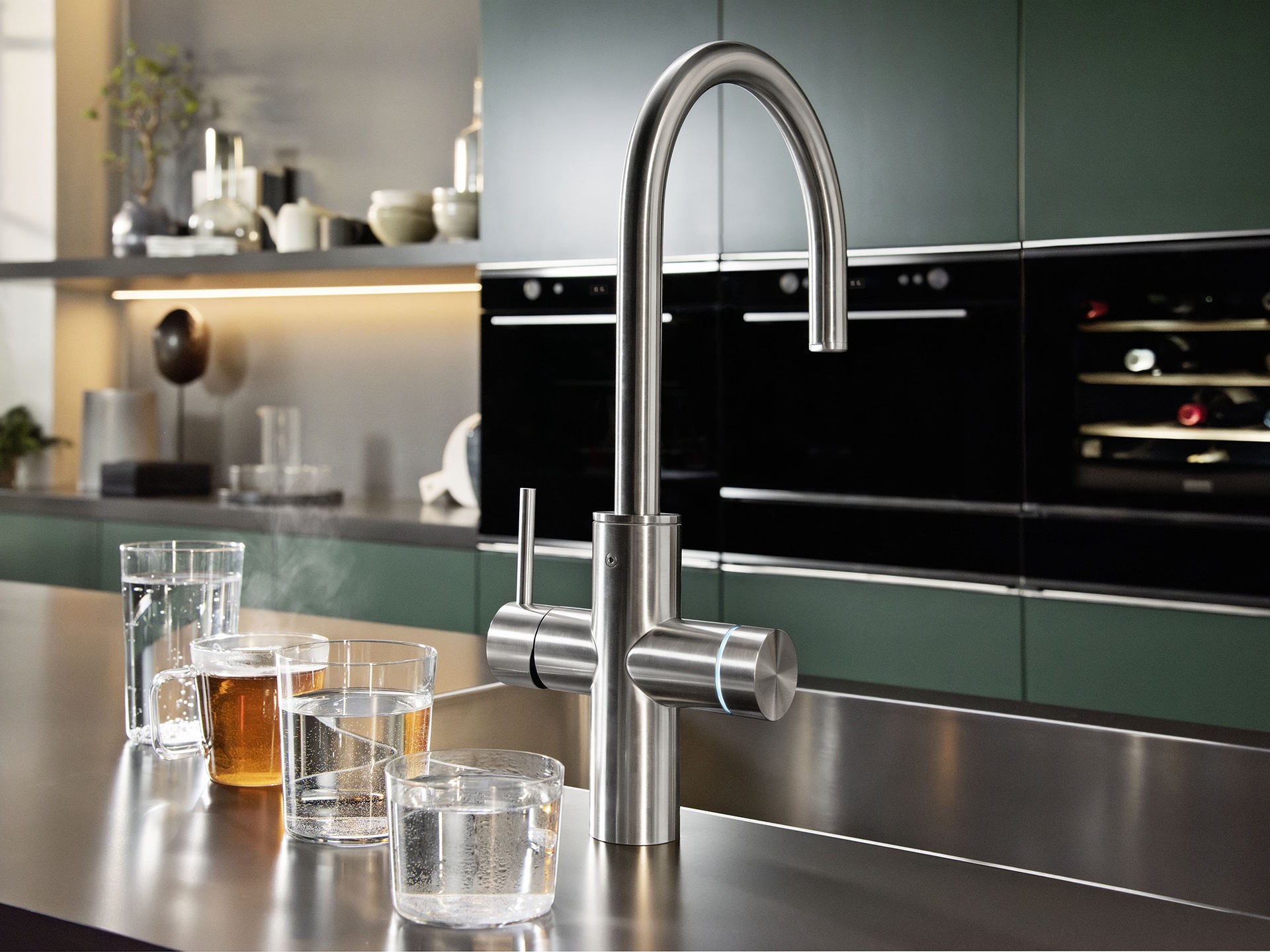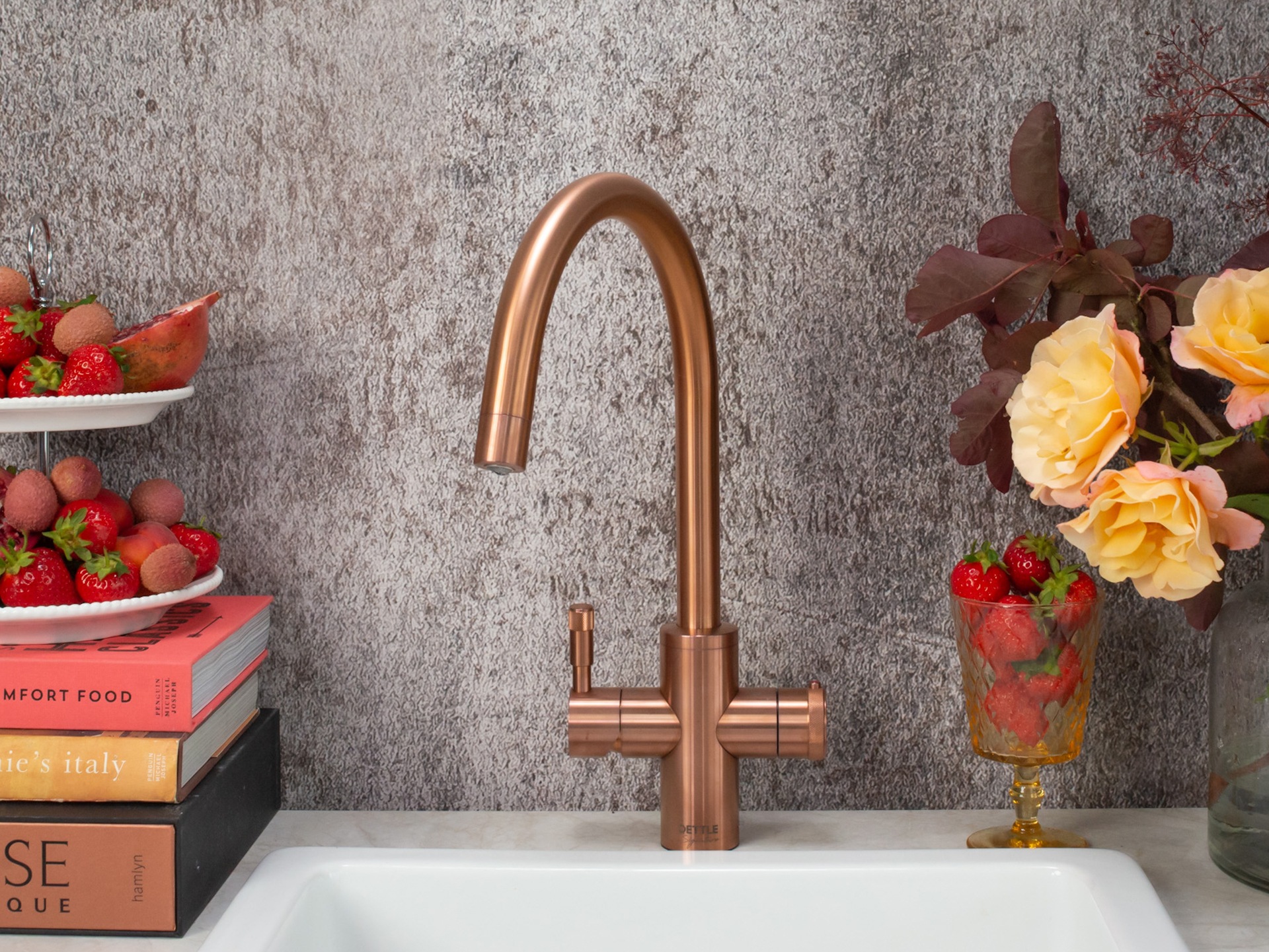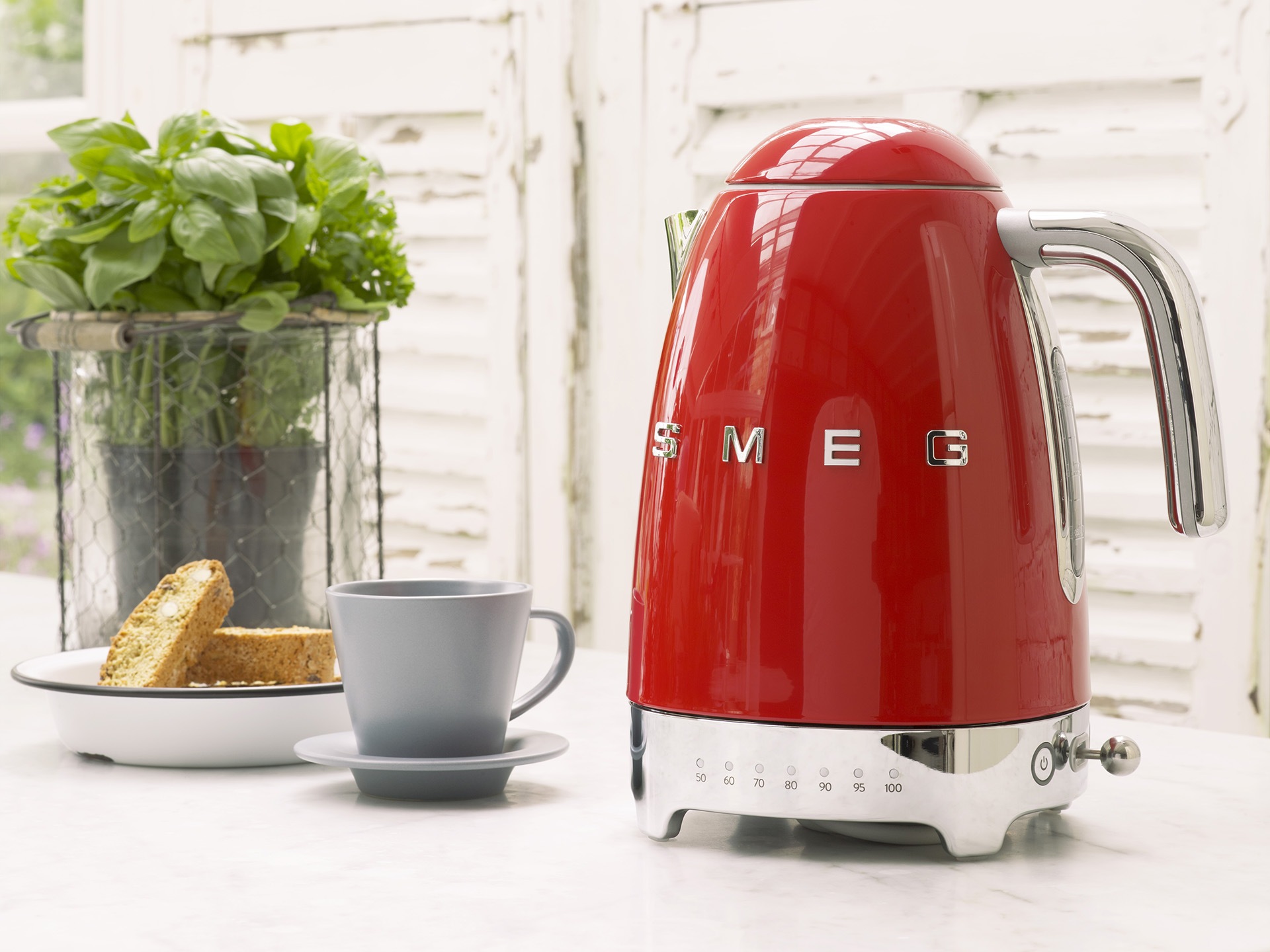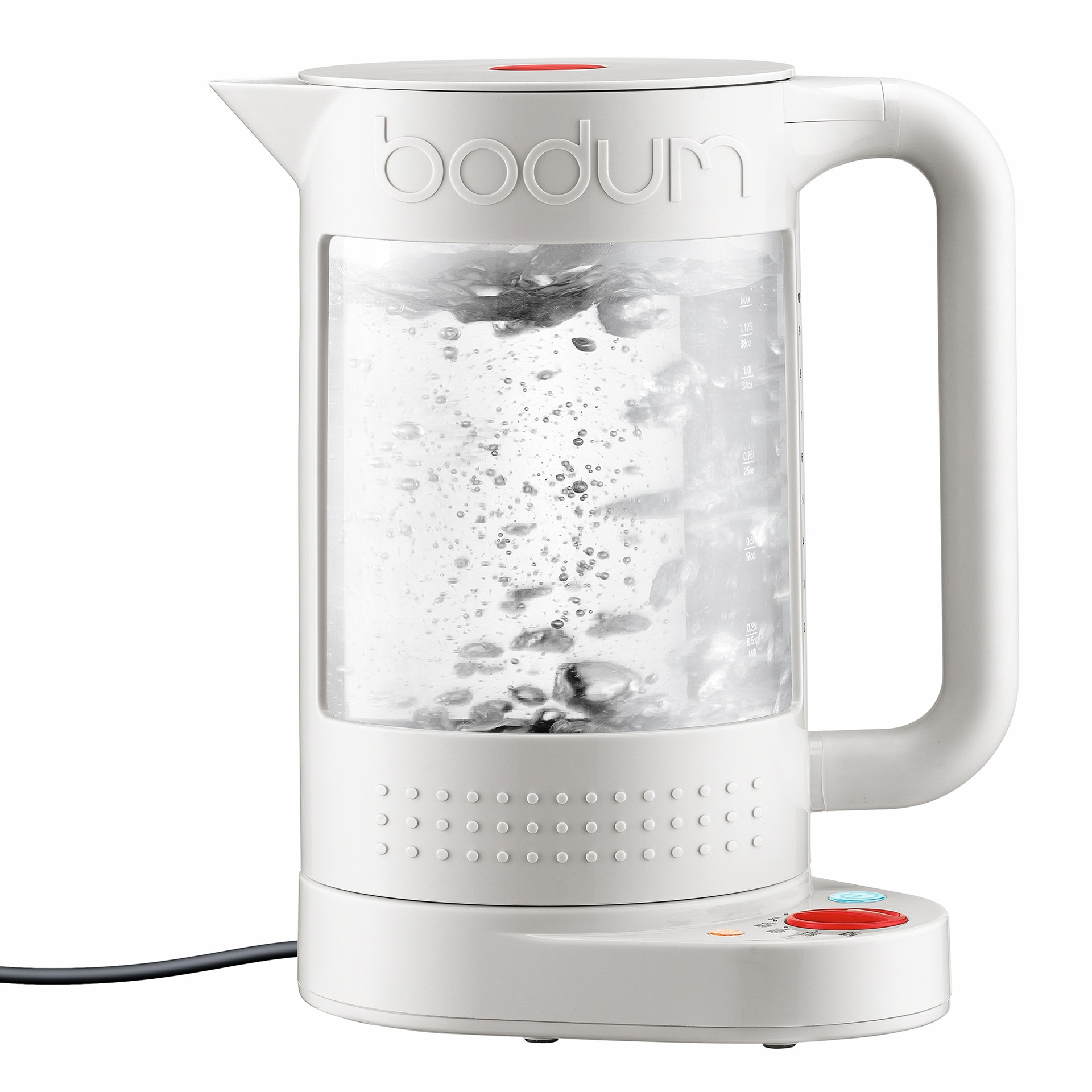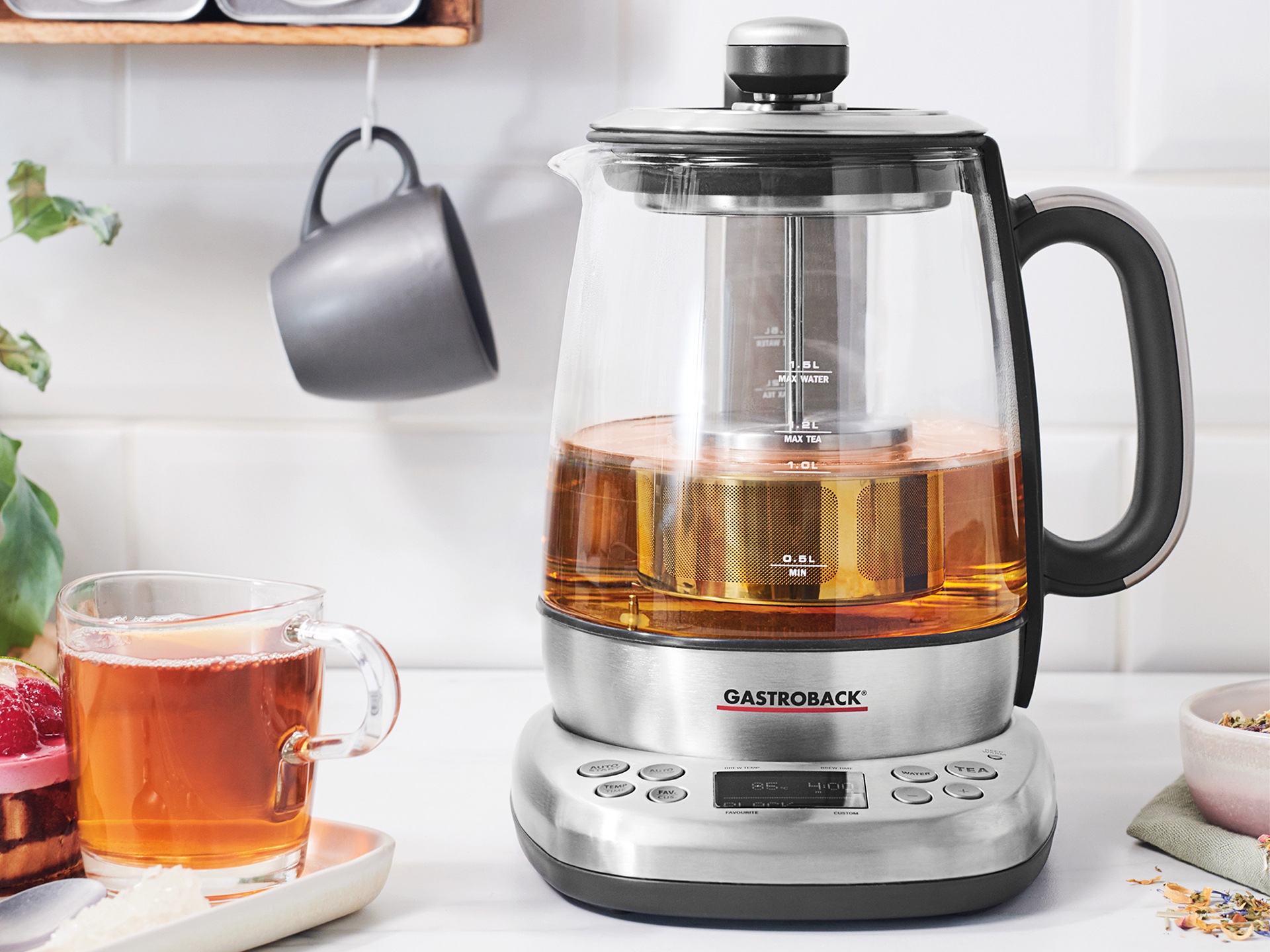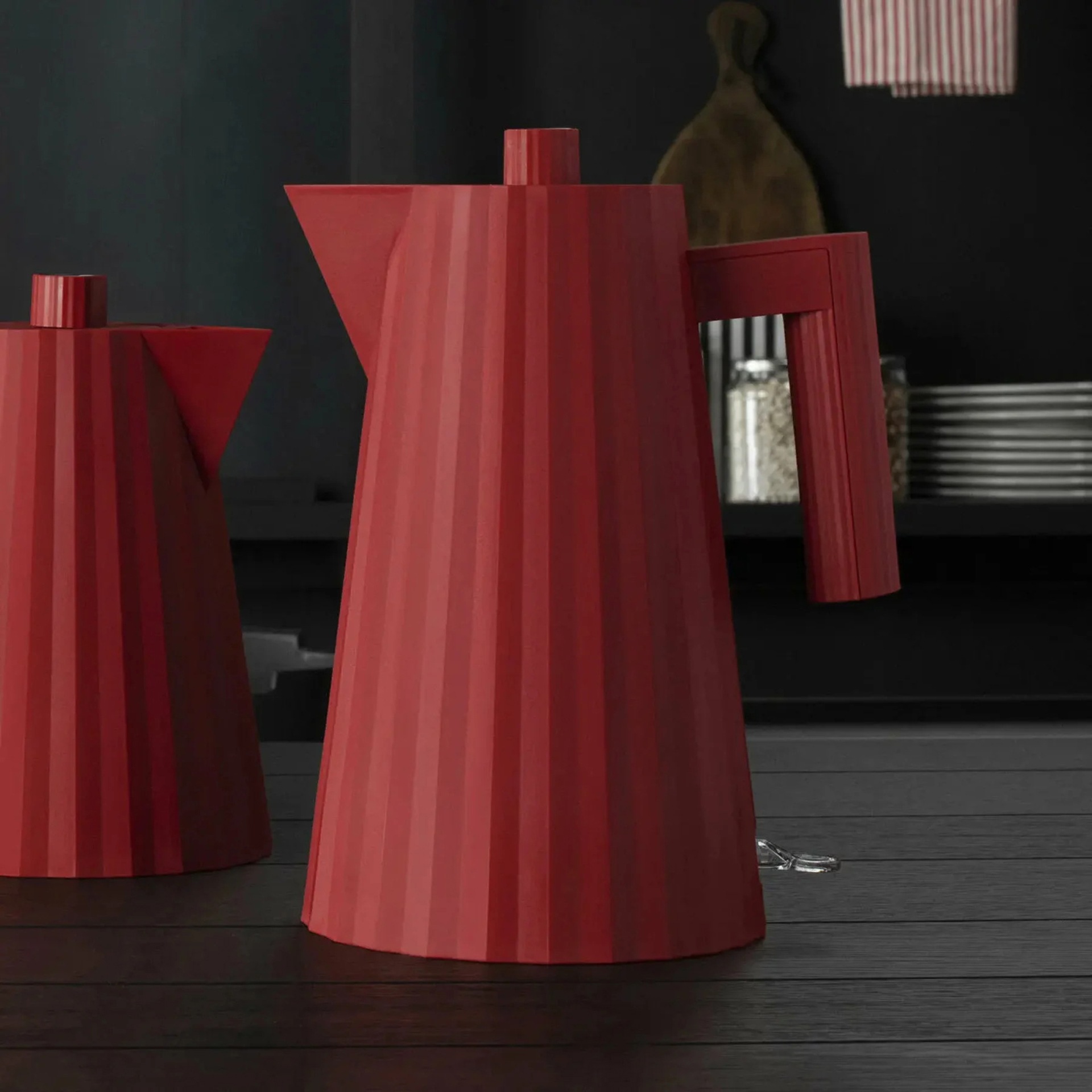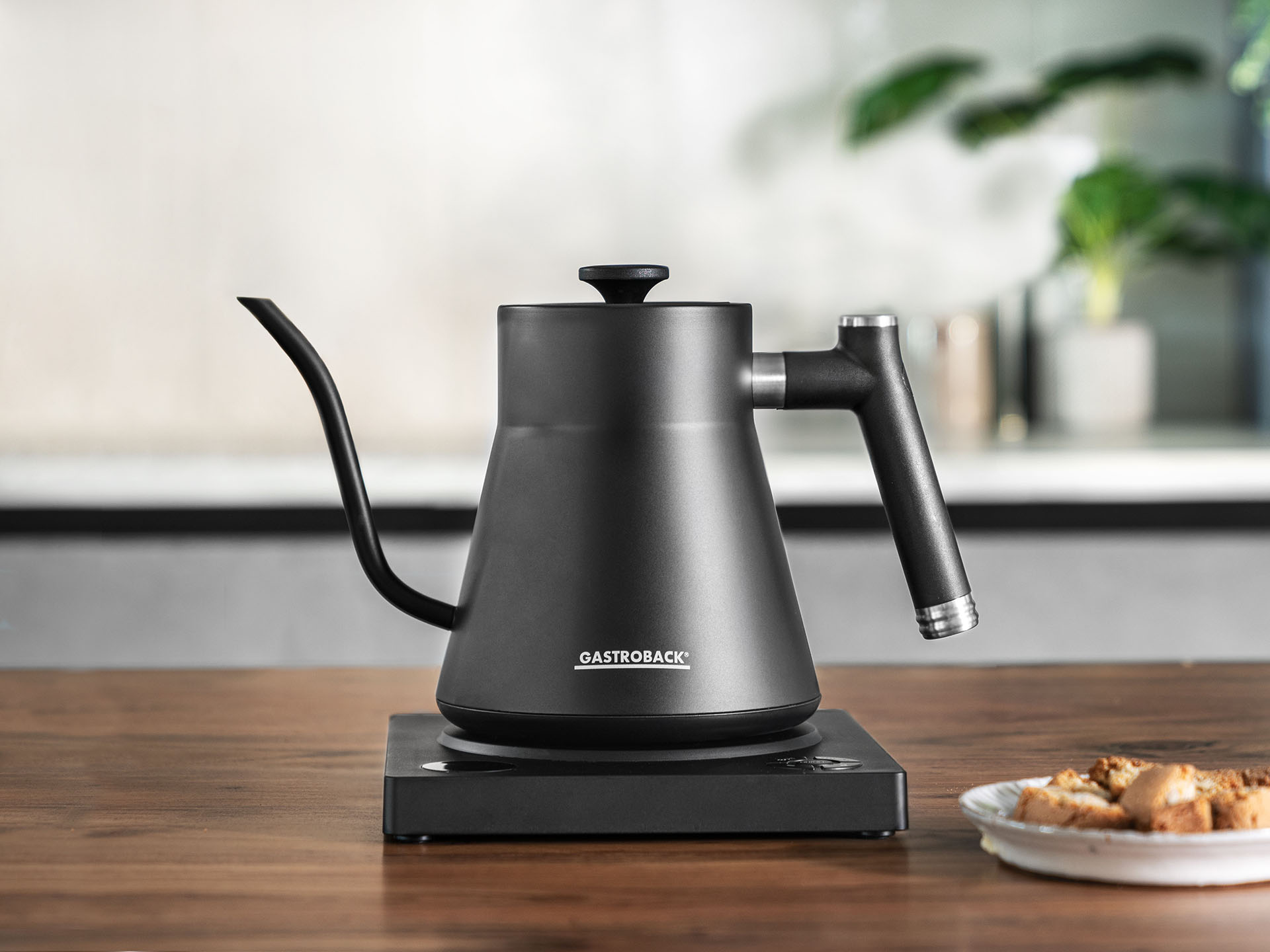Boiling water tap vs kettle
How do boiling water taps really perform, and do they do anything a good old fashioned kettle won’t do? We’ve got all the information you need before you decide what to buy.
It is estimated that 80% of new high-end kitchens and 20% of more modestly budgeted new kitchens include a boiling-water tap. Some manufacturers have seen sales double year on year. It seems as though boiling-water taps are well on their way to becoming standard fixtures in our kitchens. So what’s the appeal? We take a look at what boiling-water taps have to offer, and what the latest kettles are bringing to the table.
Although they have only become popular in the last few years, boiling-water taps were actually invented in 1970 by Henri Peteri, founder of Dutch boiling-water tap company Quooker. Also sometimes known as boiler taps, hot-water taps, or instant hot-water taps, most boiling-water taps today also dispense hot and cold water from the same tap, and some provide filtered and even sparkling water too.
How they work
A boiling-water tap is connected to a small, insulated water tank that is installed beneath the sink. This stores water at, or just above, boiling point, ready to be used whenever you need it. Because the tank is well insulated, it takes a remarkably small amount of energy to keep the water in it hot and ready to go whenever you need it. Some systems use a pressurised water tank and others a non-pressurised, vented tank.
Instant boiling water
One of the biggest benefits of having a boiling-water tap in your kitchen is, of course, being able to get boiling water instantly: no need to wait for a kettle or pan of water to boil.
Boiling-water taps tended to be marketed as as 3-in-1, 4-in-1, 5-in-1 etc. The 3-in-1 models are the most basic, and give you boiling water and standard hot and cold water from the same mixer-style tap.
Filtered water too
Many models use a separate, activated-charcoal filter to filter the water going into the tank. This means that the boiling water is filtered, but 4-in-1 models generally utilise the filter to give you a separate stream of cold (ambient) filtered water as well as the boiling water, and standard hot and cold. In some systems, this filtered water is chilled too, though this will require an additional chiller unit such as the Quettle Chiller, which is bought separately and sits under the sink next to the tank.
Sparkling water
The highest-spec systems, such as Quooker taps fitted with its CUBE attachment, dispense filtered and chilled still or sparkling water. This gives a 5-in-1 tap that will provide regular (1) hot and (2) cold water, (3) boiling water, chilled filtered (4) still and (5) sparkling water. The CUBE (again, a separate unit that sits under the sink next to the tank) works a bit like a chiller-cum-soda machine to chill then carbonate water using a CO2 canister, which needs to be replaced after 60l has been dispensed.
Capacity
The size of the water tank that comes with the tap generally ranges from 2-4l, though some go up to 11l. You will pay more for a tap with a larger-capacity water tank. You’re only likely to need one of the very largest tanks if you have a large family, all of whom drink a lot of hot drinks, and you do a lot of cooking.
Energy use
Before they have any experience of using a boiling-water tap, people are often, understandably, concerned that keeping a reservoir of boiling water ready to go all the time will use a lot of energy, but boiling-water taps use a surprisingly small amount of electricity. Stephen Johnson, Managing Director of Quooker UK, explains that it only takes a little bit of energy to maintain the temperature of a boiling water tap’s tank, compared to the energy required to boil a kettle from scratch.
“This means not only will you save time, with instant boiling water available within seconds, but you’ll also be saving money on your energy bills,” says Johnson. “On average a home will boil their kettle four times a day, maybe even more if they’re boiling water for cooking purposes. The cost of boiling your kettle can easily add up, especially if you’re overfilling it. Boiling water taps use minimal energy whilst keeping the water hot over the course of the day. They can also be placed on standby mode overnight.”
“By dispensing the right amount of water needed at any given time, boiling-water taps also help reduce water wastage. Gone are the days of overboiling the kettle only to pour away unused water.”
Some taps also have a standby or holiday mode that you can use to reduce the temperature of the water in the tank for a while.
Space saving
James Bodsworth, Creative Director at Daval Furniture, points out another benefit of going for a boiling-water tap, “Choosing a boiling-water tap removes the need for a kettle, freeing up space on your work surface, which can be particularly helpful in small-space kitchens.”
Design
Most boiling-water taps come in a sleek minimalist design, though retro antique-style ones are also available. Most taps are simple curve designs of different heights or L-shaped. Some have a pull-hose in the end. Paul Illingworth, of Abode, which makes Pronteau taps, says, “Early tap designs were larger and bulkier, whereas today you can pick from a range of contemporary, traditional, and, more recently, industrial, and Scandi-style designs, which offer smaller footprints in a variety of styles and finishes.”
Most of them are monobloc designs, which means they have one tap (like a mixer tap) rather than two individual taps. But there are some ‘bridge’ models, including from Wodar, that have two twist taps at the base plus the central spout, which might be useful if you don’t want to change your sink. Some manufacturers, including Grohe, InSinkErator and Quooker, also offer smaller, boiling-water-only taps that you can add to your sink as a second tap, if you want to keep your existing taps and sink.
Standard finish is generally chrome, but there are lots of other finishes available, including stainless steel, gunmetal, bronze, copper, gold colour, rose gold and matt black, grey and white.
Brands
Many manufacturers now sell boiling-water taps, including Quooker, Qettle, Grohe, InSinkerator, Abode, Franke, Fohen, Wodar, Blanco, Hanström, Zipwater, and Caple, as well as own brands, like B&Q’s GoodHome.
Boiling water
Most ‘boiling-water’ taps actually deliver water a few degrees below boiling, at, perhaps 96°C, once it’s been through the pipe to reach the tap. For most uses, this doesn’t really matter. Some brands, such as Qettle and Quooker, however, do make a selling point of the fact that they deliver water actually at 100°C. Some taps let you set the temperature you want the water delivered at, from 70°C or so up to 100°C or just below.
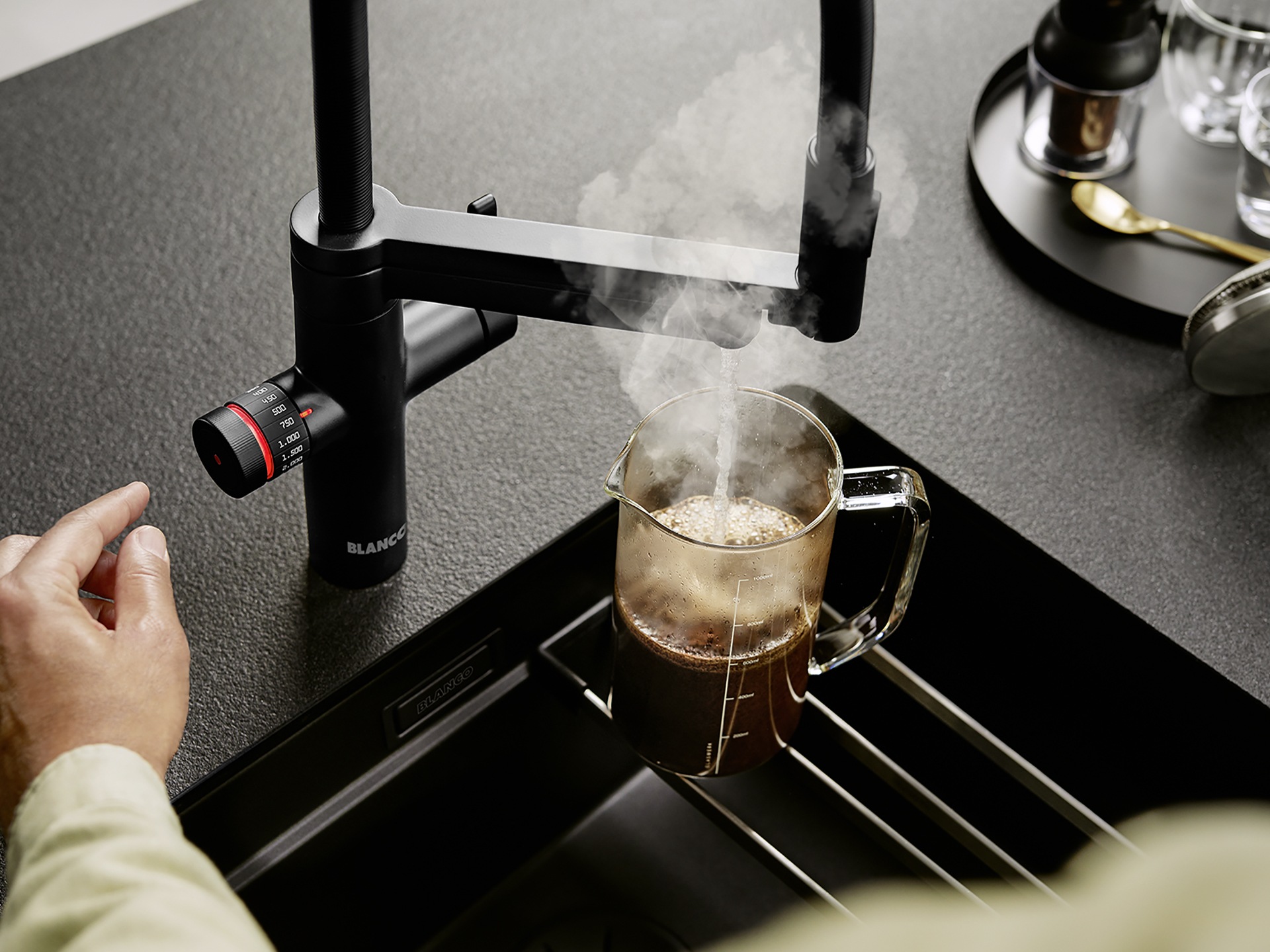
- Blanco’s drink.hot EVOL-S Pro semi-professional 4-in-1 tap
Safety
It would seem reasonable to be concerned about the safety of having scalding hot water coming out of a tap right into your kitchen sink, especially if there are children or other vulnerable people in the house. But the safety features on boiling-water taps should guarantee only competent adults can access the boiling water. Some taps have a separate safety button that needs to be pressed before boiling water will be dispensed, and almost all of them use a spring-lock button to dispense the boiling water. These only release boiling water while they are being pressed, and cut off the water as soon as they are released. So you can’t accidentally leave the boiling water running. Abode’s Presteau taps use a special Hotkey system, which means the boiling water will only be dispensed when the special Hotkey is in place on the tap. You can store the magnetic ‘key’ lever on the back of the tap ready to use, or put it up out of reach of children.
Boiling-water taps have the potential to be a boon for anyone who finds it hard to lift and pour a heavy kettle full of hot water. Make sure you choose one that is well insulated so it won’t get too hot. And be aware that there is a knack to dealing with the stream of boiling liquid coming out.
Building regs and WRAS
Because boiling-water taps are a relatively new product, regulations have not yet caught up with the market, and the regulatory situation is not clear cut. At present, to comply with Building Regs Part G, boiling-water taps need to store water at a max of 100°C. Some boiling-water taps are WRAS (Water Regulations Approval Scheme) approved. WRAS is the UK standard for preventing waste, misuse, undue consumption and contamination of the water supply.
Other boiling-water taps struggle to meet WRAS and Building Regs because they store water at more than 100ºC. Interestingly, Zipwater explains the rationale for setting its water temperature at 98ºC thus, “[Our] HydroTap is set to dispense water at 98ºC for the following reasons:
– To achieve WRAS approval, you can’t dispense water above 98ºC for safety and energy efficiency.
– Keeping water at 98ºC reduces power consumption compared to 100ºC models.
– A smooth stream of water instead of a mix of steam and water is dispensed from the tap, meaning that it doesn’t splash or spit.
– Tea and coffee benefits hugely in terms of flavour when water is dispensed slightly below 100ºC. In fact, pouring 100ºC water onto tea and coffee burns them, impairing the taste.”
So the whole issue of choosing a boiling-water tap that dispenses water at 100ºC or just below boiling point turns out to be more complicated than it might at first appear.
Price
Boiling-water taps cost between about £400 for the cheapest models (this includes the tap and water tank) and £3,000-plus for top-spec/large-volume models. On top of this you will have to pay for installation and factor in ongoing costs of filter replacement.
Running costs
As for ongoing running costs, here’s what one manufacturer, Qettle, says about its tap with a 4l capacity tank: “On standby, our 4l boiler tank uses 39W. Based on an electricity cost of 28p per kWh, this means the daily running cost of a Qettle would be 26p. If you used four cups of boiling water a day, this would add 3.5p to the daily running cost – working out at a cost of just under a penny per cup. Please note the usage/cost can differ depending upon whether cups are drawn separately or at the same time.”
In a standard kettle with a 3kW element, it costs about 1p to boil a cup of water or about 5p to boil a full kettle.
This means running costs are not dissimilar to using a kettle, though, of course, it all depends on how many times you use the kettle, how much you put in it each time, what the unit cost of electricity is etc. But the upfront costs, plus the ongoing cost of the filters, mean that the boiling-water tap is always going to be more expensive.
Hot water too
Some models mix their boiling water with cold to provide the hot as well as the boiling water, removing the need for the sink to be connected to a hot-water tank or combi boiler. Others rely on the household hot-water supply for their hot water.
Latest features
Manufacturers are expanding the range of colours, designs and features all the time. Most top-of-the-range models now dispense five different types of water, but Franke’s Mythos water 6-in-1 tap providing filtered ambient, chilled, sparkling and boiling water plus standard hot and cold.
Digital controls are increasingly a feature of high-end taps allowing you to control the quantity and temperature of the water you want. The Mythos water hub, for example, has an LED interface to make it easier to navigate through all those different types of water. Homeowners can also use Franke’s @Home app to customise their water experience, by doing everything from adjusting dispensing volume to selecting sparkling levels or boiling temperature. And the water hub uses Radio Frequency Identification (RFID) technology to notify you in the app when the filter needs changing.
Taps with pull-out flex hoses are another popular trend. Michael Sammon, from Wödår, explains the appeal of the flexible hose attachments, “A pull-out tap with a flexible hose is ideal for cooks who enjoy preparing meals from scratch, as it simplifies food prep and dishwashing. Meanwhile, those who need boiling or cold water in a hurry can use the main faucet.” Pull-out hoses avoid the problem of trying to use one hand to hold up a heavy pan to fill it with potentially splitting and steaming boiling water, while pressing the boiling-water safety button with the other hand.
Another gadget that might be helpful in specific situations is Quooker’s drip-tray attachment that is useful if you don’t want to install the tap over a sink.
Installation
Some companies have their own network of installers. For other brands, you will need to get a plumber to install your boiling-water tap. Or you could tackle the installation yourself if you are good at plumbing: InSinkErator explicitly says its taps can be installed by competent DIYers.You will need a plug socket in the cupboard under your sink to plug the hot-water heater into. And it makes sense to measure the space in your under-sink cupboard before you buy to be sure there is enough space for the tank.
Maintenance
Most boiling-water taps contain a filter, which will need to be changed regularly, according to the manufacturer’s instructions. This obviously adds to the running costs.
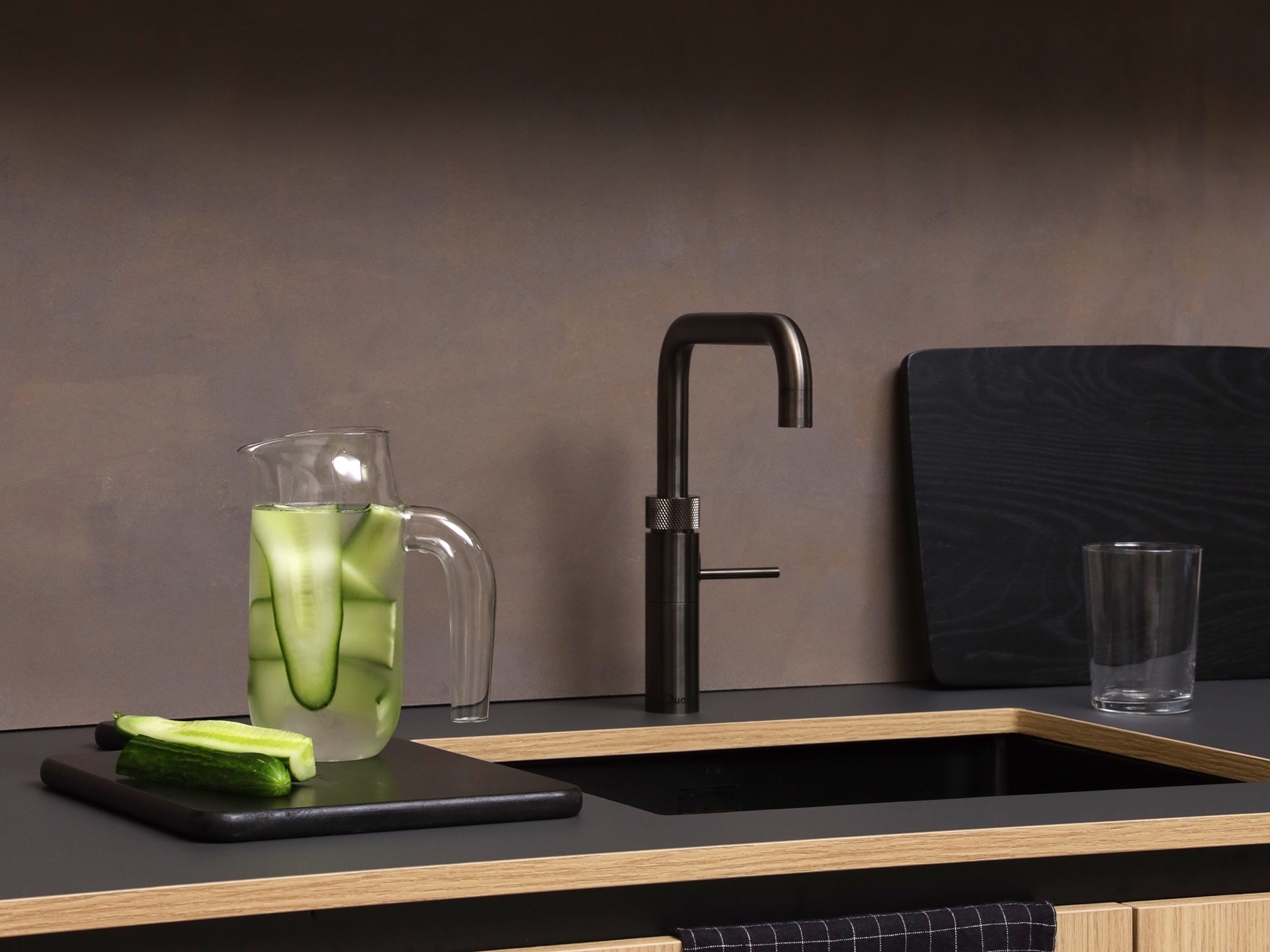
- Quooker Fusion square gun metal, from £1,590
Lifespan
Companies typically offer a two-year warranty on their taps. Boiling-water taps are reckoned to last ten to 15 years.
Sustainability
As we have seen above, boiling-water taps use less energy than we might expect, and also avoid heating water unnecessarily, as they encourage you to only pour out as much boiling water as you need. Companies like Quooker and Abode are leading the way in terms of reuse: you can return spent filters and CO2 cannisters to the company, where they will be refilled. Meanwhile, you can buy reconditioned Quooker taps from Rehome. Quooker has a strong all-round focus on sustainability, using renewable energy to power its factory.
James Bodsworth points out another potential sustainability benefit, “Many taps also now offer sparkling and chilled water functions alongside boiling water, which can help reduce the use of single-use plastic water bottles in the home.”
So, as we can see, there are many benefits to owning a boiling-water tap, if you are prepared for the steep upfront cost. But do your research and buy the best model you can afford with the specific features that you suit the needs of you and your household. And, if you possibly can, try before you buy: see if you can find a showroom – or friend’s house – where you can try out the brand that interests you. This is an expensive product that you will use a lot, so you need to be sure you like the way it works and find it easy to use. And give serious consideration to the whole 100ºC vs 98ºC issue, because it turns out those two or three degrees matter more than you might have imagined.
Peter Clayton, from Trade Plumbing, sums it up like this, “Although a boiling water tap isn’t necessarily an essential, you will find that for daily life it can be a useful luxury to have.”
Kettles
In comparison, traditional kettles may feel somewhat old fashioned – or comfortingly familiar, depending on your perspective. Their biggest advantage over boiling-water kettles is price: it is obviously a lot cheaper to buy a kettle than a boiling-water tap. Ongoing costs are fairly similar once you have taken into account the fact that boiling-water taps are on all the time and have filters that need to be replaced, while kettles are a relatively inefficient means of boiling water, which we tend to overfill.
Cost
You can pay anything from £20 to £200 for a kettle, depending on the number of features, quality, and brand name. In their tests, Which? has found good and bad kettles in all price brackets, so it’s not a simple question of “you get what you pay for”. Do some research before you buy, read product reviews, and decide what features are essential for you and which are unnecessary.
Eco kettles
The most sustainable kettles are ones that:
- last a long time,
- use as little energy as possible to boil and turn themselves off quickly afterwards,
- have a minimum fill level of just one cup (250ml), which should help you only boil as much water as you need.
Extra features
Modern kettles offer a host of other new features and come in stylish contemporary – and retro – designs. Potentially useful new features you might want look out for on a new kettle include:
- variable temperature settings – so you can set the kettle to heat the water to a range of lower temperatures as well as boil. This is particularly useful if you want to use your kettle to make coffee (best made with water at 90-95ºC) or green tea (use water at 70-80ºC),
- low minimum-fill level, for minimal energy use,
- hard-water filter to prevent limescale,
- smart features, which let you use an app to check the water level in the kettle and switch it on,
- double-walled or insulated sides, which mean the outside of the kettle stays cool,
- integral water filter,
- keep-warm function, the best of these use vacuum flask technology rather than using more energy to reheat the water,
- concealed element, which makes the kettle easier to clean,
- coloured lights, some kettles light up in use and change colour to tell you how close they are to boiling.
Specialist designs
There are also different specialist designs of kettle available now to cater for those who enjoy specific drinks. Elegant gooseneck kettles (like the Gastroback model below), are designed to give a slow pour, perfect for making pour-over coffee. Two-in-one tea-maker-kettles have settings to give the perfect temperature and steeping time for all kinds of teas.
Hot-water dispensers
If you are put off by the cost of a boiling-water tap, but find the idea of instant hot water appealing, there is another option you could consider: a counter-top hot-water dispenser (or instant hot-water kettle, as they are sometimes known). These appliances look a bit like coffee machines and cost from around £40 to £120. You’ll pay more for models with a larger capacity and an integral water filter. Hot-water dispensers hold around six cups of water and deliver near-boiling water for your cuppa within about a minute. One of these might be a good choice if you find a traditional kettle hard to handle. The Breville HotCup is a model that consistently rates well in reviews.
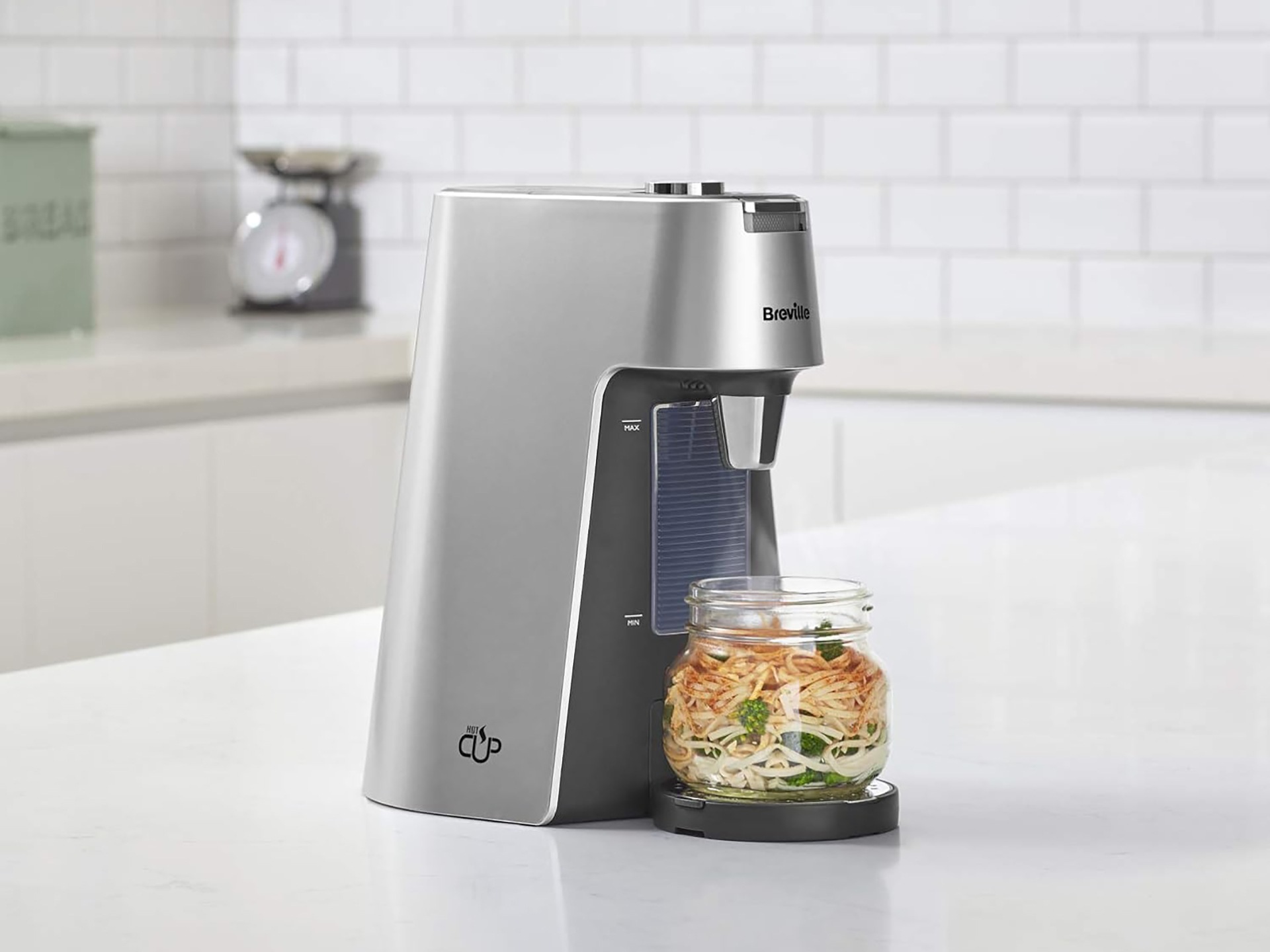
- Breville HotCup instant hot-water dispenser: an alternative to both the kettle and boiling water tap
Conclusion
It’s largely a matter of personal choice, when choosing between a boiling water tap or kettle. If you can afford the up-front cost of a boiling water tap, the sleek integrated finish, low running costs, and hot water on demand make them a brilliant choice. Kettles remain popular as more budget options or where you need something specialist, such as variable temperatures for different teas or for making pour-over coffee.

